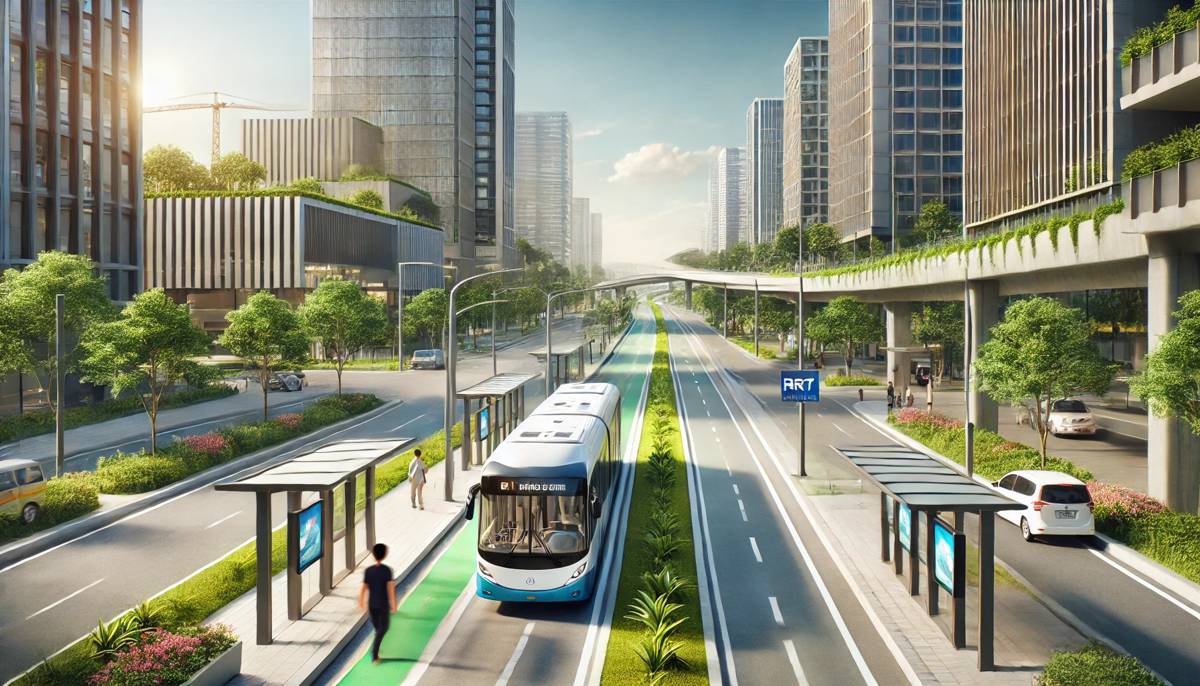Bus Rapid Transit System to transform Urban Mobility in Cavite
Cavite, one of the most dynamic provinces in the Philippines, is taking a monumental leap forward in its urban transportation landscape. The local government has officially invited proposals for the development of the Cavite Bus Rapid Transit (BRT) System, an ambitious project aimed at transforming the way residents and commuters navigate the province. This move is set to significantly reduce travel time, ease traffic congestion, and provide a sustainable alternative to the current modes of transport.
The Cavite BRT system is not just a transport project; it’s a vision for the future. As urbanisation continues to swell in the region, the need for a robust, efficient, and environmentally-friendly transport system has never been more urgent. The BRT system, with its promise of dedicated lanes, modern buses, and streamlined services, could be the key to unlocking Cavite’s potential as a model for urban development in the Philippines.
Bidding Process Opens the Floor for Innovation
The call for proposals marks the beginning of a competitive bidding process, where local and international companies are expected to present their most innovative and cost-effective solutions. The bidding is not just about finding a contractor; it’s about identifying a partner who can help realise Cavite’s vision for a modern transit system.
According to the project brief, the Cavite BRT system will feature several key components:
- Dedicated Bus Lanes: These lanes will be reserved exclusively for BRT buses, ensuring that they can move unimpeded by regular traffic.
- State-of-the-Art Buses: The buses will be equipped with the latest technology, including GPS tracking, real-time passenger information systems, and energy-efficient engines.
- Integrated Ticketing System: A cashless, contactless payment system will streamline the boarding process, making it quicker and more convenient for passengers.
- Intermodal Connectivity: The BRT system will be designed to seamlessly connect with other forms of public transport, including jeepneys, tricycles, and potentially future rail services.
This open call for proposals encourages companies to bring forward their most cutting-edge solutions. The local government has stressed the importance of innovative approaches, particularly in terms of sustainability and efficiency. As such, proposals that incorporate renewable energy sources, such as solar power, or that demonstrate a clear plan for reducing carbon emissions, will be particularly well-received.
Addressing Cavite’s Urban Mobility Challenges
The Cavite BRT system is being developed in response to the province’s rapid growth. As one of the most populous areas in the Philippines, Cavite faces significant challenges when it comes to transportation. Traffic congestion is a daily reality for many commuters, particularly those traveling to and from Metro Manila. The existing road infrastructure, while extensive, is struggling to keep up with the demand.
Moreover, the province’s reliance on traditional forms of public transport, such as jeepneys and buses, contributes to both traffic jams and air pollution. The BRT system offers a viable solution to these issues, providing a faster, more reliable, and environmentally-friendly alternative.
According to a spokesperson from the Cavite Provincial Government: “The BRT system is not just about building a new transport network; it’s about enhancing the quality of life for Caviteños. By providing a faster, cleaner, and more efficient way to travel, we hope to make a positive impact on both the environment and the economy.”
Economic and Environmental Impacts
The economic benefits of the Cavite BRT system are expected to be substantial. By reducing travel time and improving connectivity, the BRT system will make it easier for people to access jobs, education, and other essential services. This, in turn, could stimulate economic growth, attract new businesses, and create jobs within the province.
From an environmental perspective, the BRT system represents a significant step towards reducing Cavite’s carbon footprint. Traditional buses and jeepneys are notorious for their high emissions, contributing to both air pollution and greenhouse gas emissions.
By contrast, the BRT system will utilise modern, energy-efficient buses that produce fewer emissions. Additionally, the introduction of dedicated bus lanes will reduce traffic congestion, further decreasing the overall level of pollution in the province.
The Future of Transportation in Cavite
The Cavite BRT system is more than just a response to current transportation challenges; it’s a forward-thinking solution designed to future-proof the province’s infrastructure. As cities around the world grapple with the challenges of rapid urbanisation, many are turning to BRT systems as a cost-effective, scalable solution. Cavite is no exception, and this project could set a precedent for other provinces in the Philippines.
In the coming years, as the Cavite BRT system takes shape, it will be closely watched by other local governments, urban planners, and investors. Success here could lead to the adoption of similar systems in other parts of the country, potentially transforming the way millions of Filipinos commute.
Emphasising the Need for Stakeholder Collaboration
The success of the Cavite BRT system will depend heavily on collaboration between various stakeholders, including government agencies, private companies, and the local community. The provincial government has already begun engaging with these groups, seeking input on how to design a system that meets the needs of all users.
One key area of focus is ensuring that the BRT system is accessible to everyone, including those with disabilities. The project brief highlights the importance of designing stations and buses that are fully accessible, with features such as ramps, tactile paving, and audio-visual announcements.
Additionally, there is a strong emphasis on public outreach and education. The success of the BRT system will depend on public buy-in, and the government is committed to ensuring that residents are fully informed about the benefits of the new system. This includes information on how to use the system, as well as the environmental and economic benefits it will bring.
A Brighter Future for Cavite
As Cavite embarks on this transformative journey towards a more efficient and sustainable transportation network, the Cavite Bus Rapid Transit system stands as a beacon of progress. This bold initiative promises not only to alleviate current mobility challenges but also to set the stage for long-term economic growth and environmental stewardship.
With the right partnerships and public support, Cavite could very well become a model of modern urban transport in the Philippines and beyond.




















